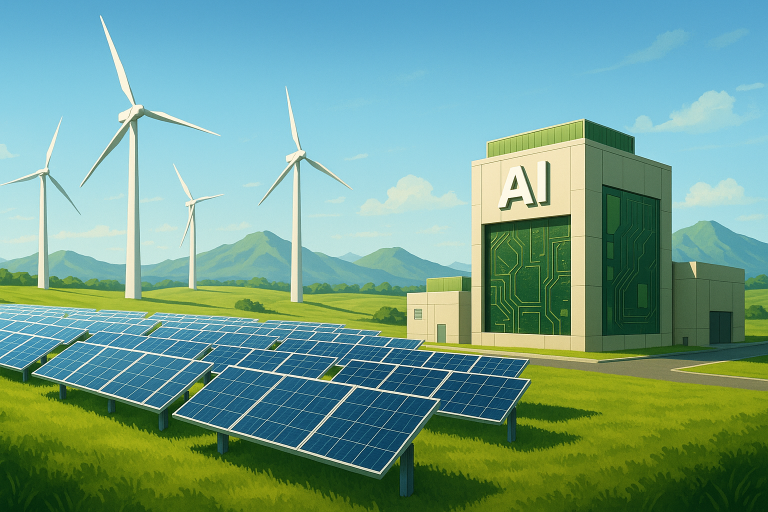Australia is taking a decisive step towards merging artificial intelligence and clean energy. Nvidia Corp. has joined forces with local startup Firmus Technologies Ltd. to create a network of AI data centres powered entirely by renewable sources.
Known as Project Southgate, the A$4.5 billion ($2.9 billion) initiative has begun construction in Melbourne and Tasmania. When completed, it will deliver 150 megawatts of computing capacity, supported by Nvidia’s latest GB300 chips.
According to a Bloomberg report, the first facilities are expected to go online by April 2026, with longer-term plans to scale up to 1.6 gigawatts nationwide.
Clean energy drives new AI infrastructure
Project Southgate marks a turning point in how Australia approaches energy-intensive computing. The initiative will operate using renewable wind, solar and hydropower, helping offset the high carbon footprint usually associated with data centres.
Bloomberg states that Firmus said the expansion could unlock 5.1 gigawatts of new clean-energy projects across the country, equal to around 5 percent of Australia’s current installed capacity.
The data centres will feature Nvidia’s high-performance GPUs and energy-efficient cooling systems. Designed for AI workloads, the sites aim to cut water use to near zero while maintaining scalable compute capacity.
Bloomberg notes that according to Firmus, this model could serve as a blueprint for how countries integrate sovereign AI infrastructure with sustainable energy use.
Project funding and industry partnerships
Firmus has already raised US $330 million in funding to accelerate construction, backed by Ellerston Capital and Nvidia. The company is partnering with Infratil-owned CDC Data Centres, which will host GPU infrastructure within its Australian network.
The partnership allows Project Southgate to leverage existing grid access and operational expertise while maintaining full renewable-energy sourcing.
Approvals have been granted for a five-hectare site in Launceston, Tasmania. The campus will include two server halls, offices and associated facilities, with strict environmental conditions to protect local ecosystems.
Bloomberg reports that Tasmania’s government is positioning the site as part of a “Green AI Factory Zone,” establishing the region as a hub for low-carbon digital infrastructure.
Scaling ambitions and regional challenges
While the first phase will provide 150 megawatts of power, Firmus aims to scale Project Southgate to 1.6 gigawatts by 2028. Achieving this will require significant upgrades in transmission capacity and renewable output, as well as coordination with national energy authorities.
The project’s eventual expansion could attract up to A$73.3 billion in cumulative investment, creating thousands of construction and technical jobs.
However, experts note that Tasmania’s limited transmission capacity could pose short-term challenges. Balancing AI-driven electricity demand with renewable supply will be critical to ensure grid stability.
Still, analysts say the project represents one of the most ambitious attempts to align clean energy development with AI infrastructure anywhere in the world.
Innovation beyond data storage
Beyond its physical infrastructure, Firmus is collaborating with Rafay Systems to enhance its AI cloud platform. The partnership will enable developers to train and deploy models using the same renewable-powered data framework.
By pairing green energy with compute-intensive applications, Project Southgate aims to make Australia a global reference point for sustainable AI growth.
As the AI industry’s power consumption rises worldwide, Australia’s approach could help bridge the gap between digital expansion and climate responsibility — setting a precedent for how countries build AI at scale without deepening environmental costs.
The post Nvidia and Firmus drive Australia’s renewable-powered AI expansion appeared first on Invezz

